Harness the benefits of multi-cloud environments with our top picks for multi-cloud management platforms. Continue reading for the most thorough analysis and comparison of their key features and capabilities.
Multi-cloud brings you the best of all cloud platforms, not just in terms of features and services but also in cost savings and discounts. That’s why more and more organizations are ditching vendor loyalty for freedom of choice. While 86% of organizations are using more than one cloud environment in at least some capacity, 70% are actually struggling to manage them all. The need for multi-cloud management solutions couldn’t be more urgent.
The market is rife with multi-cloud management solutions and platforms. Some offer end-to-end comprehensive features, while others focus and specialize in specific aspects of multi-cloud management. With so many options, evaluating, comparing, and choosing the right fit can be too time-consuming.
To make things easier, we have compiled the best cloud management platforms for you. Continue reading to find out how we rank each.
Multi-cloud is simply when organizations use services from more than one cloud service provider (CSP). For instance, if you use Azure for enterprise applications like Microsoft 365 and identity management but host your main website and customer data storage on AWS, you’re running a multi-cloud.
For many organizations, multi-cloud architectures are unplanned. They organically take shape as different teams in organizations prefer different cloud environments or as a result of business events, like global expansion or M&A activity.
Multi-cloud is not to be confused with hybrid cloud, which tightly integrates two different types of infrastructure environments — on-premise, private cloud, and/or public cloud. To be considered multi-cloud, you simply need to use services from two or more public cloud vendors, even if there is no connection between the two cloud environments.
For a detailed comparison of multi-cloud vs. hybrid cloud architectures, you can read our full blog: Multi-Cloud vs Hybrid Cloud: How to Make Informed Cloud Choices
In this blog, we’ll cover multi-cloud management platforms, some of which have hybrid cloud support built in. If you’re looking exclusively for hybrid cloud solutions, you might want to check out our other blog: Top 11 Hybrid Cloud Solutions in 2025: Which One Should You Choose?
Despite the many benefits, multi-cloud deployments come with their own set of challenges that can be a put off for many organizations:
These challenges are why organizations shouldn't go into multi-cloud haphazardly, instead planning strategically to avoid compatibility issues down the line. The remaining management, governance, and observability challenges can be addressed with a multi-cloud management platform that supports all cloud providers in your multi-cloud.
Strengths: Broad multi-cloud support, proprietary intercloud network backbone, deep visibility, AI-powered automation and real-time optimization features, strong cost and resource optimization.
Best For: Cloud Engineers and DevOps teams that want a unified deployment and monitoring plane across clouds. Organizations needing seamless multi-cloud networking and migrations.
The emma cloud management platform offers a full-stack multi-cloud management platform with a single control plane for public, regional and niche clouds. 60+ integrations and connected external services ensure a diverse tooling ecosystem and allow users to seamlessly plug in their existing stack.
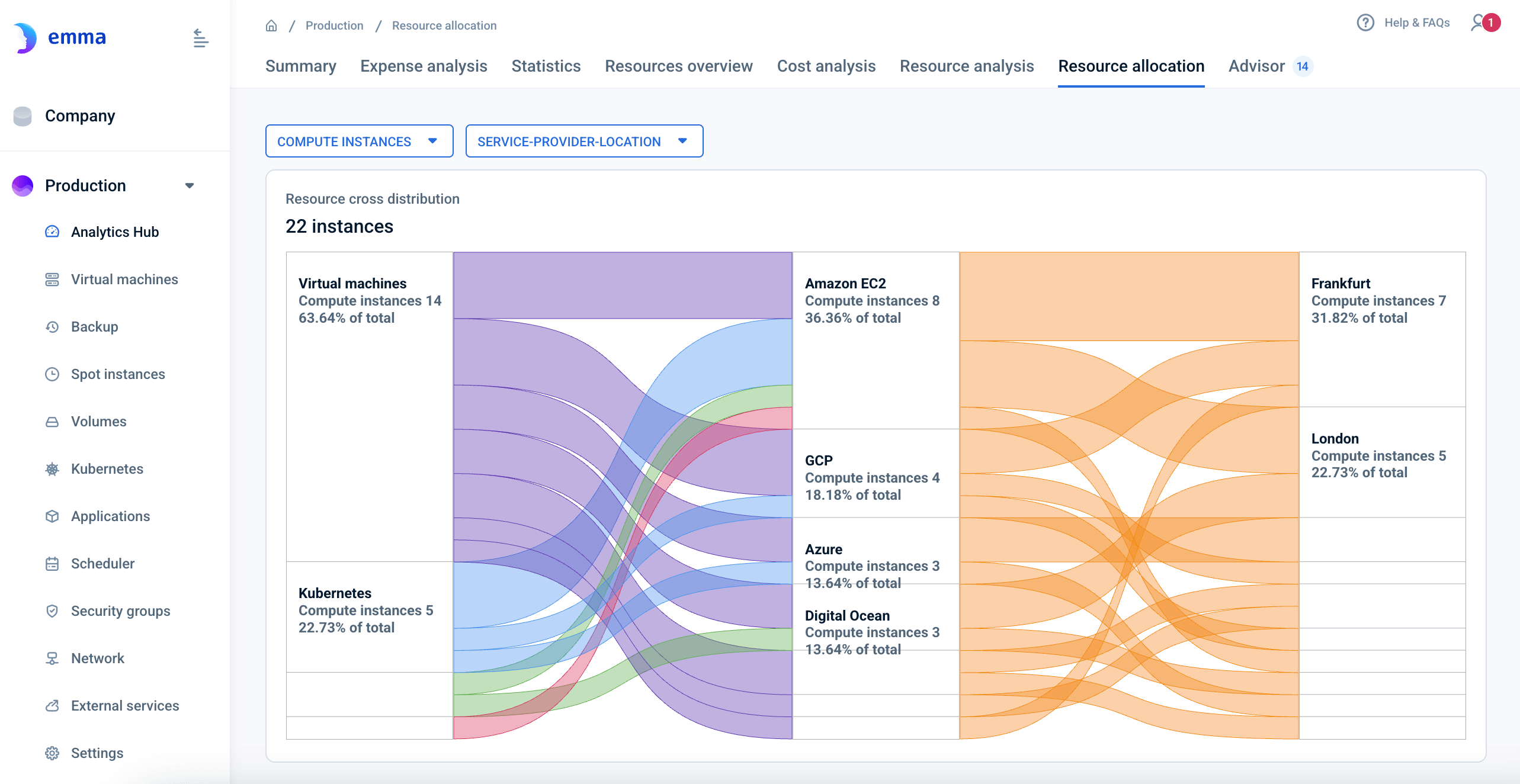
emma natively connects to major hyperscale clouds and smaller providers, including AWS, Azure, GCP, Digital Ocean, Gcore, and more.
Users get a single, no-code self‑service console for provisioning across any supported cloud. All cloud resources are deployed and consumed through a unified catalog that abstracts provider differences.
One of emma’s key differentiators is that it owns and operates its multi-cloud networking backbone connecting disparate clouds and regions. Users can enjoy high-performance, secure, and dependable connectivity that reduces cross-cloud data friction and egress costs (by up to 80%) via AI-powered data egress optimization.
emma fully automates the deployment process via its GUI-based, intuitive dashboard, which is up to 7x faster than hand‑coded IaC. Users can define rules and thresholds, and emma’s automation engine automatically provisions and scales resources based on CPU utilization, events or network traffic.
Those who prefer deploying programmatically, DevOps in particular, can use IaC integrations like emma’s Terraform Provider and other plugins to integrate emma into their CI/CD pipelines.
Administrators gain real-time cloud visibility with cost, usage, and performance metrics for every workload. Unified visibility means teams can spot hot‑spots or outages and correlate issues across all environments and enforce rules and thresholds directly from the dashboard.
emma tracks resource consumption and costs per project, team, or cloud. It uses predictive analytics to forecast demand and suggest optimal configurations proactively. emma can pinpoint resource wastage, recommend optimal cloud placements, identify spot instances, rightsize idle VMs or shut off unused containers to optimize utilization and cut costs by up to 75%.
The emma platform allows users to establish and enforce a global policy layer, so the same governance and security policies (access, encryption, compliance checks) apply to every cloud endpoint.
The platform is relatively new compared to veteran platforms. Still, its ecosystem and marketplace are growing fast.
Strengths: Strong cost optimization and FinOps focus, comprehensive IT asset inventory and governance.
Best For: Businesses focused on asset visibility and FinOps teams
Flexera’s Cloud Management Platform (powered by Snow Commander, formerly Embotics vCommander) is a governance and FinOps-focused hybrid cloud management platform. With Flexera CMP, you can use out-of-the-box and extensible policies to automate governance of costs, operations, security and compliance. 80+ native integrations provide good coverage for common tools.
.png)
Flexera CMP supports a wide range of environments, including AWS, Azure, Google Cloud, VMware vSphere, OpenStack and bare metal.
Flexera CMP uses reusable blueprints, called Cloud Application Templates (CATs), to standardize deployment and orchestrate infrastructure and services across any cloud. Users can simply click to deploy, and the CMP handles all provider APIs behind the scenes, giving a consistent self‑service experience for any cloud.
The platform focuses on orchestration rather than network overlay. However, users can define network configurations and automate interactions between multi-cloud application components via CATs.
A powerful orchestration engine triggers orchestration and automation across fleets of cloud servers and cloud services. Flexera CMP can be connected to CI/CD pipelines via APIs, so builds can trigger cloud deployments. The system also supports auto‑scaling arrays, self‑healing scripts, and automated failover.
It provides centralized visibility and monitoring across clouds. Application and service‑level metrics and alerts from all providers are piped into the CMP’s dashboard, allowing operators to see and control CPU, memory and network resources without jumping between consoles.
Flexera CMP has built‑in FinOps features. It allocates and reports on costs down to the business unit and project level and the automated cost optimization engine can spin down idle instances or right‑size VMs based on utilization patterns and predefined remediations policies.
Flexera CMP also allows setting automated policies for security and compliance across all clouds. Users can choose from a broad set of out-of-the-box policies or create custom policies to identify misconfigurations, automate governance, and enforce compliance.
Flexera CMP is primarily focused on IT/finance teams, so the user interface and workflows can be heavy or distracting for developers. Teams need a degree of expertise to implement and fully utilize the platform.
Strengths: Tight integration with VMware environments, advanced automation, and consistent governance across private and public clouds.
Best For: Enterprises already using VMware in hybrid or private clouds.
VMware Aria is the new umbrella for vRealize and CloudHealth. It’s an enterprise-grade multi-cloud suite that provides a common control plane and data model so that teams can control cloud costs and capacity, optimize performance, secure configurations, and accelerate automation across any infrastructure. VMware is known for its broad ecosystem, extensible with 220+ integrations.
.png)
The platform is built to support private and public clouds. Aria helps manage resources across AWS, Azure, Google Cloud, VMware vSphere/vCenter, Kubernetes clusters, OpenStack, and many other environments.
VMware Aria abstracts cloud specifics into a single control plane, allowing users to define cloud templates once and apply them to any cloud via a single automation console.
The platform does not provide a proprietary cross-cloud network backbone. It relies on the networking of the underlying clouds, allowing users to orchestrate the setup of VPNs or cloud interconnects as part of provisioning workflows.
VMware Aria Automation lets teams create rich cloud templates that can automate the provisioning of anything from VMs to Kubernetes clusters across clouds. In addition, the platform can proactively automate workload balancing and placement using real-time predictive analytics from CloudHealth and AI capabilities.
Aria Hub provides a single pane of glass for monitoring environments. It’s powered by VMware Aria Graph, which aggregates cost, capacity, and resource metrics from every cloud into one data store. As a result, admins get a comprehensive view of their infrastructure utilization and application performance.
Aria offers visibility into every dollar spent and can automate rightsizing across clouds. The platform highlights underutilized instances and unused reservations, and can automatically adjust capacity to reduce spend, if configured to do so.
The platform allows teams to establish and enforce configuration best practices, organization-wide standards and fine-tuned policies across clouds. Users can enable event-driven automation to detect workload changes and auto-remediate drift.
VMware Aria can be complex to deploy and learn for teams not already invested in VMware technologies. Given its strong hybrid focus, it can be overkill for small deployments or purely cloud-native teams.
Strengths: Deep integration with CI/CD pipelines, customizable workflows. Excellent self-service and policy capabilities.
Best For: DevOps-heavy teams and service providers managing VMs and containers across hybrid deployments.
HPE Morpheus Enterprise Software is a hybrid cloud management platform with a strong self-service catalog and centralized usage and billing information across environments. It comes with 90+ cloud integrations, ready to use out of the box, so you can quickly unify the tools you already own.
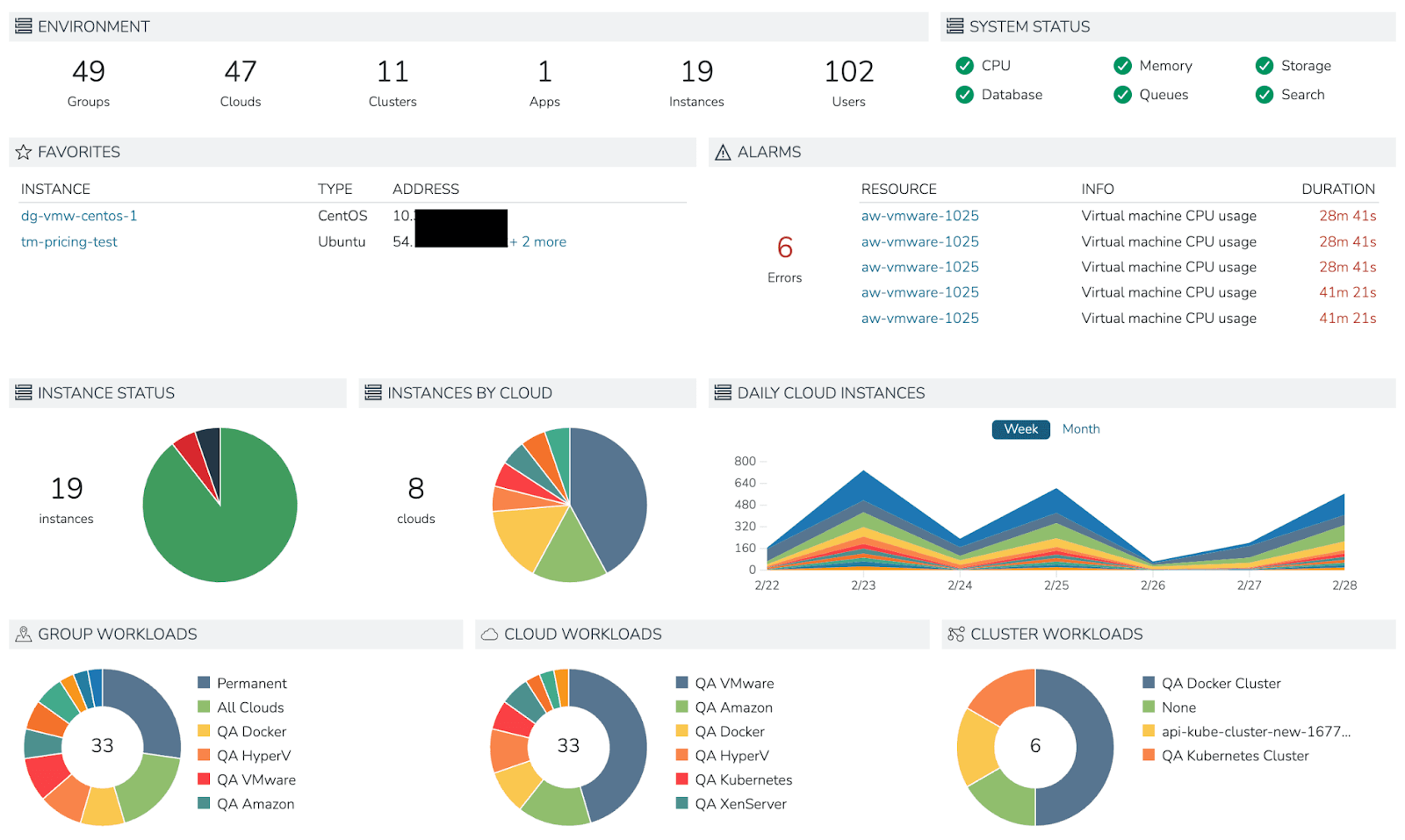
Morpheus is marketed as a self-service engine for hybrid and multi-cloud. It integrates with on‑prem hypervisors – VMware, Nutanix – and all major public clouds, including AWS, Azure, and GCP.
Morpheus provides a unified catalog and self‑service portal through which developers request VMs, containers, or databases regardless of the target cloud. Morpheus translates the request into the appropriate cloud API calls behind the scenes, abstracting away any differences.
It does not include its own cross-cloud network layer, but it can automate cloud network configurations – VPCs, subnets, gateways – via code within workflows.
The core of Morpheus is a policy‑driven automation and orchestration engine, which runs automation jobs, such as auto-scaling, backups, or running Ansible playbooks, on predefined triggers or schedules.
Morpheus provides centralized monitoring of all managed resources. Its dashboard shows global health checks and utilization for cloud and on‑prem resources. In order to maintain governance and control, admins and cloud centers can publish a service catalog, so developers can provision resources on-demand while staying within policy
In addition to unifying cost analytics, Morpheus lets users set budget alerts or quotas per project to prevent over-consumption. The platform uses predictive analytics to offer right-sizing recommendations to reduce costs by up to 30%.
Morpheus’ policy layer ensures cloud usage meets corporate standards and that user roles and access are uniform across environments. Built-in cloud governance engine helps control access and enforce role-based policies to eliminate shadow IT while ensuring users get access to the resources and services they need.
There can be a steep learning curve, and Morpheus requires a license to operate.
Strengths: Strong governance and FinOps. Self-service provisioning and extensibility.
Best For: Mid-sized enterprises grappling with many cloud accounts and tools, seeking integrated orchestration and financial oversight.
Cloudbolt is marketed as an augmented FinOps platform. It provides a single-pane-of-glass visibility and policy engine to manage automation across multi-cloud, multi-tool environments. You get out-of-the-box integrations with 240+ tools to unify your existing stack and CI/CD pipelines.
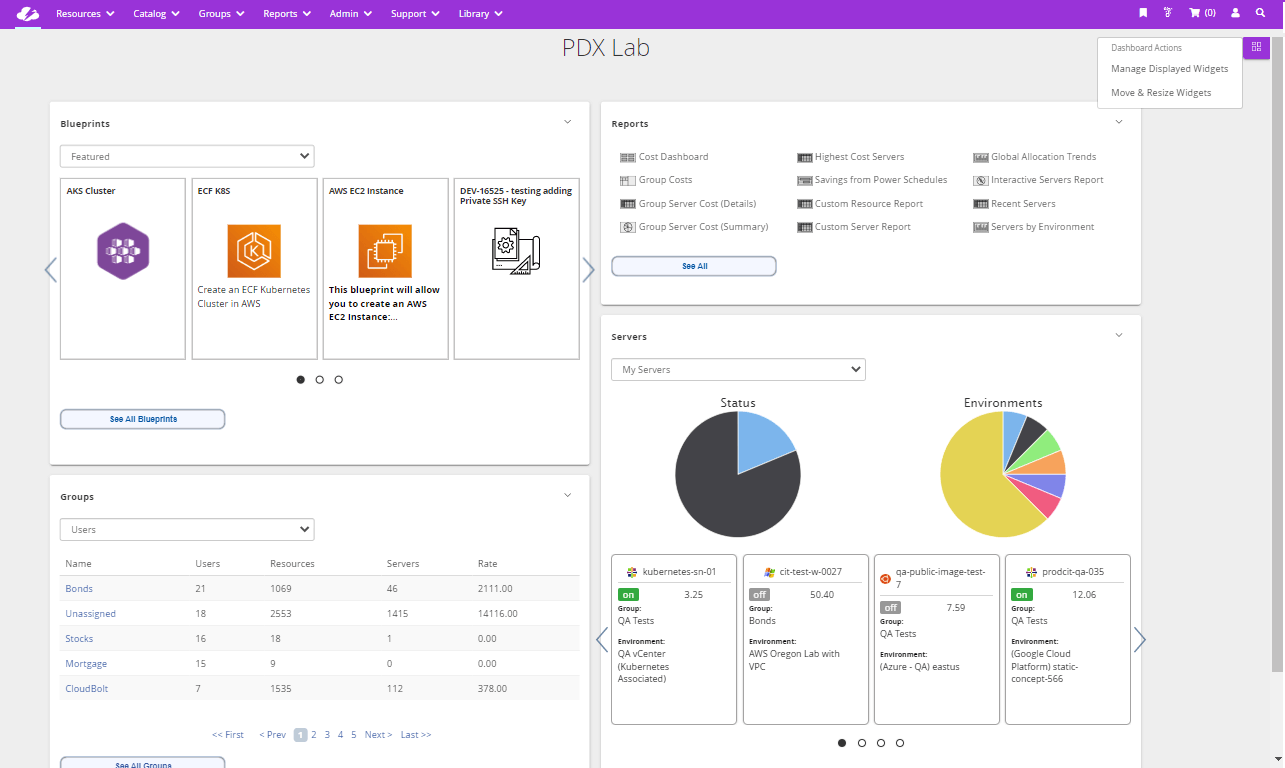
CloudBolt supports on-premise and major public cloud platforms, including AWS, Azure, GCP, VMware, HP, OpenStack, and more. In fact, you can connect to virtually any platform using its adapters.
CloudBolt provides one universal catalog for all infrastructure. Admins and DevOps can define a stack once to create a service blueprint, and users can simply click to orchestrate provisioning anywhere. CloudBolt handles the underlying differences between various environments.
CloudBolt itself doesn’t build or manage cross-cloud network fabrics. However, users can also orchestrate multi-cloud connectivity programmatically through workflows that call third-party APIs to establish cross-cloud peering, VPNs, or transit gateways.
Users can automate day-1 deployments and day‑2 tasks, like patching and backups, from the same platform. They can set event-driven triggers, such as auto-running a cleanup job on VM termination.
CloudBolt recently acquired StormForge, which adds AI-driven autoscaling recommendations into its orchestrator.
CloudBolt’s Auto-Discovery feature continually scans all connected clouds, so admins can see every server, container and service in one inventory. It helps identify and correlate cross-cloud incidents and capacity issues and allows users to launch remediation workflows directly from the platform itself.
Cost management is a first-class feature of CloudBolt. CloudBolt’s Augmented FinOps continuously aggregates billing data from all clouds and provides business-aligned reporting. Users can define policies to automate right-sizing and shut down non-production or idle instances automatically.
CloudBolt’s self-service catalog enforces guardrails through pre-approved blueprints and limits. In addition to centralized monitoring and audit logs, CloudBolt can be integrated with third-party security tooling to augment security and governance features.
CloudBolt can be complex to implement, so it’s best suited for environments with significant tooling that need unification.
Strengths: Strong integration with Nutanix’s HCI stack. Governance, automation, and cost monitoring in hybrid cloud setups.
Best For: Organizations leveraging Nutanix infrastructure and seeking unified hybrid cloud management.
Nutanix Cloud Manager, formerly Prism Central/Hycu Cloud, is a hybrid multi-cloud management platform tightly integrated with the Nutanix ecosystem. It is designed for intelligent operations – providing real-time monitoring, insights, and automated remediation across clouds and edge sites. NCM provides out-of-the-box support for various IT Service Management (ITSM), IT Security, and automation platforms.
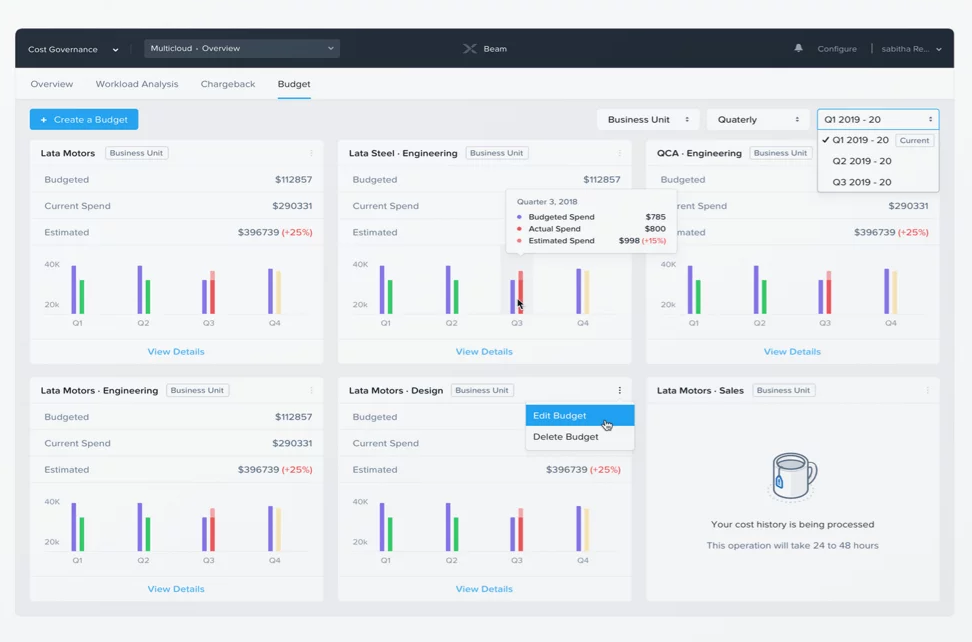
NCM can be deployed as a licensed platform or consumed as a SaaS offering. It covers Nutanix on-prem, VMware on-prem and the major public clouds, including AWS, Azure, and GCP, out of the box.
NCM offers both CLI and GUI-based self-service via pre-defined blueprints for deploying VMs and applications. It abstracts away the underlying differences between platforms, allowing consistent deployment workflows across clouds.
NCM does not include its own network fabric. Instead, it uses existing VPN or IPsec capabilities of its platform Nutanix Flow, or the public cloud’s VPN services.
NCM’s low-code/no-code blueprint framework makes deployment and lifecycle management of workloads automated and easily repeatable. In addition, the platform includes Intelligent Ops – an ML‑driven engine for automation. It automatically forecasts capacity needs and focuses on capacity planning, proactive performance anomaly detection, and automated task execution.
NCM provides a unified control plane for observability through Nutanix Prism. NCM’s Intelligent Ops includes monitoring, insights, and automated remediation.
NCM’s Cost Governance module provides visibility and analytics into resource consumption across various cloud environments, making it easier to control costs and optimize automation policies.
NCM provides a uniform security posture across managed clouds by enabling consistent policy enforcement, like approved images. NCM also has a Security Central that enables enterprise security operations teams to detect and remediate real-time security threats automatically based on security and compliance frameworks.
NCM’s full value is best realized in environments that already use Nutanix AHV or VMware on-prem. Those with heterogeneous on-prem infrastructure may find limited integration and feature depth.
Strengths: Scalr is for teams who prefer code-driven deployment and need to bake in policy-driven automation and guardrails into their IaC pipelines.
Best For: Platform-engineering and DevOps teams standardizing on Terraform.
Scalr is a remote operations backend designed for Terraform and OpenTofu with full versioning, audit trails, and a hierarchical configuration mode. It helps platform teams create secure, standardized workflows that enable self-service for developers.

Scalr can integrate with any cloud through Terraform providers. Users routinely manage mixed environments, involving AWS, Azure, GCP, VMware, Kubernetes, and more, through Scalr. If a provider isn’t built in, users can add it via custom configurations.
Scalr provides a single orchestration layer atop Terraform. Scalr’s backend executes all Terraform runs, providing a consistent workflow interface.
Connectivity is handled by Terraform and the underlying infrastructure. Scalr can orchestrate network setup – VPCs and VPNs – as defined in Terraform.
Scalr automates Terraform execution at scale, helping teams manage and execute Terraform code across many environments in a consistent and controlled way. However, it does not natively offer autoscaling, which requires native integrations with cloud providers and the capability to monitor runtime metrics and trigger scale actions automatically.
Scalr’s scope is deployment/state management, not real-time monitoring. Admins can see logs to get a unified history of the changes made through the Scalr UI.
Scalr is not a FinOps platform. Any cost optimization needs to come from policies, such as restricting oversized instances via Terraform, or via external FinOps tools.
The platform emphasizes policy-as-code for security. It runs all IaC through Open Policy Agent (OPA) with custom rules, so organizations can define and enforce compliance rules before resources are created.
Scalr lacks comprehensive CMP features – it does not provide native cost visibility, performance monitoring, or usage analytics across cloud accounts. It’s also primarily meant for technical users.
Strengths: Truly cloud- and stack-agnostic orchestration, and integration flexibility for complex services.
Best For: Advanced DevOps teams needing custom orchestration across hybrid/multi-cloud.
Cloudify is an open-source multi-cloud orchestration framework based on the TOSCA, a vendor-agnostic modeling language.It allows you to model entire applications and services as YAML blueprints and automate their entire lifecycle, ensuring consistency and repeatability across all supported cloud.
.png)
Cloudify can manage diverse infrastructure together, though it requires you to develop blueprints.
Developers interact with Cloudify’s portal or CLI, not individual cloud consoles. As a result, deployment experience is consistent across clouds. The Cloudify Composer (blueprint designer) provides a simple way to write blueprints. Users create blueprints that define an application topology, and Cloudify automates provisioning and other workflows on any target.
Cloudify itself does not provide a cloud network fabric. Like several other CMPs, users can create blueprints to orchestrate the configuration of networks within each cloud.
This is Cloudify’s core competency – it supports complex, scalable orchestration workflows natively. Cloudify’s engine is policy‑driven, which means users set blueprints describing desired state, and Cloudify ensures that state is achieved and maintained, repairing drifts as needed. It can also schedule periodic tasks or respond to triggers, like alerts from monitoring, by invoking workflows.
Cloudify Manager lets you see the state of deployments across clouds from a central dashboard. Cloudify ships with a Status Reporter built around Prometheus. It checks the health and status of Cloudify components and provides a consolidated view.
Cloudify itself does not include native cost analytics or FinOps. It can help optimize costs indirectly by automating the use of right-sized resources or by dynamic scaling policies, but it has no built-in cost engine. You will need a third-party tool for cost management.
Cloudify provides fine-grained role‑based access control for who can deploy or modify blueprints. It can also apply compliance checks as part of an orchestration. Any corporate security policies encoded in the blueprints are applied uniformly, and it logs all actions for audit.
It requires development of YAML blueprints, so it’s suitable for teams with strong DevOps or infrastructure-as-code expertise.
Strengths: AI-powered application resource management, cost control, and performance optimization.
Best For: Performance-driven teams needing app-aware multi-cloud optimization.
IBM Turbonomic is an AI-driven application resource management (ARM) solution. It continuously analyzes the full stack – from application performance down to virtualization and container resources – and makes live allocation recommendations to ensure optimal performance and efficiency.
%20(1).webp)
Built for hybrid multi-cloud, Turbonomic offers connectors, called controllers, for each major platform, including VMware vCenter, Amazon EC2, Azure VM Scale Sets, Google Kubernetes Engine, and more.
Turbonomic is not a provisioning front end. Rather, it continuously monitors applications and infrastructure already deployed and then automatically takes actions to optimize resources across various environments.
It doesn’t manage network connections.
This is Turbonomic’s core strength – it continuously analyzes all workloads and their resource consumption, then dynamically reallocates CPU, memory and storage across clouds to meet SLAs and minimize cost. The system uses a smart analytics engine to make precise recommendations and, in many cases, takes actions, like right-sizing, rescheduling, and changing placement, automatically.
Turbonomic provides a centralized management console that shows the whole picture of all resources. It collects utilization and performance metrics for every managed entity and presents them in one global view
Cost efficiency is baked in, as Turbonomic continuously identifies and eliminates waste to maximize resource utilization and reduce unnecessary costs. For cloud workloads, it will automatically resize or shut down instances that aren’t needed, thereby cutting bills. It can also advise on purchasing commitments.
Turbonomic’s scope is resource management, not security. However, any recommendations or automated changes it makes respect existing security policies.
The platform focuses on runtime infrastructure, not self-service deployment.
Strengths: ITSM integration, governance, provisioning, and compliance support.
Best For: Large organizations already using BMC Helix ITSM seeking to extend ITSM processes into cloud operations.
BMC’s Helix Cloud solutions form an enterprise ITOM (IT operations management) stack with multi-cloud components. It provides AI-powered service management, operations management, and workflow orchestration, aiming to improve IT efficiency and productivity in hybrid environments.
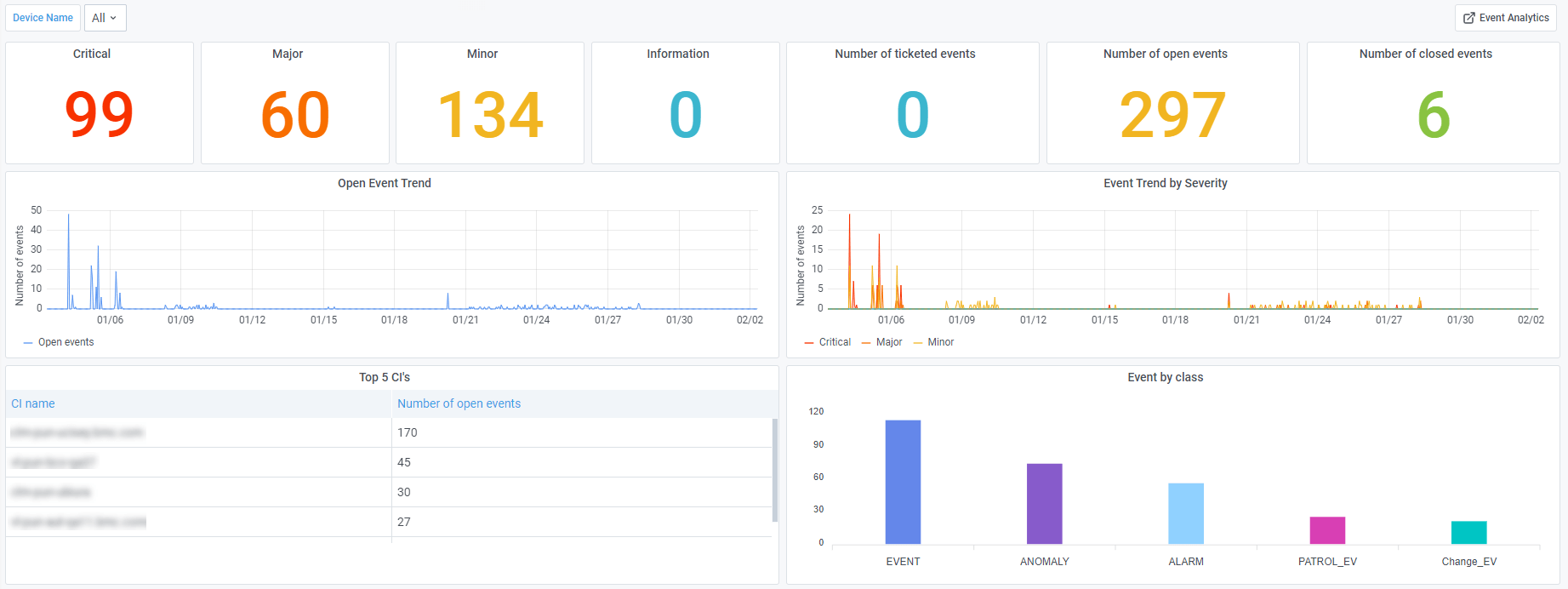
Helix CSM has tighter integration with AWS and Azure, but it also offers connectors for self-service clouds, including private OpenStack and VMware, via its Cloud Service Catalog.
Helix Cloud Management provides a unified service catalog and request portal. Users can submit service requests for VM instances through Helix’s AI‑driven catalog, which orchestrates the deployment on the chosen cloud.
Helix CSM can automate the creation of cloud VPNs or WAN connections via service workflows, but relies on existing underlying infrastructure.
Automation is a key pillar of Helix. It comes with thousands of pre‑built workflows and a visual studio for building new ones. BMC Helix provides comprehensive automation capabilities that include fulfilling service requests, managing approvals, and implementing self-healing measures to maintain operational efficiency.
Helix Cloud Management ties into BMC Helix Operations Management (TrueSight AIOps) for monitoring. It brings together infrastructure events, logs and health data from all clouds and correlates them using AIOps.
The Continuous Optimization (COPS) tool performs rightsizing by analyzing utilization. For example, it can recommend resizing idle VMs or moving workloads between cloud accounts for cost benefits.
BMC Helix provides real-time alerts for emerging threats and uses predictive analytics to recommend corrective actions. It enables compliance with DORA, FFIEC, and similar frameworks and automates key governance processes, including reporting and change management for audits. BMC dashboards are tailored to DORA and FFIEC compliance and provide actionable insights into vulnerabilities, allowing organizations to proactively address gaps.
BMC CMP is a modular product that works best within the broader BMC ecosystem. It is more geared towards governance/ops teams than developers.
That’s a wrap on our deep dive into the top multi-cloud management tools. Whether you're in DevOps hunting for automation, in FinOps chasing savings, or an admin aiming for unified visibility and control, we’ve included several options for everyone. We’ve broken down who each platform suits best, where it shines (and stumbles), and what features truly matter – all so you can find the perfect match for your cloud strategy.
Curious about emma? Give it a spin with a no-commitment 14-day free trial or book an expert-led demo to see it in action.